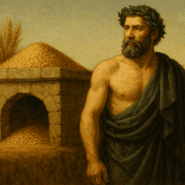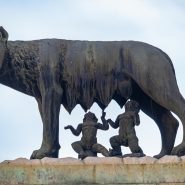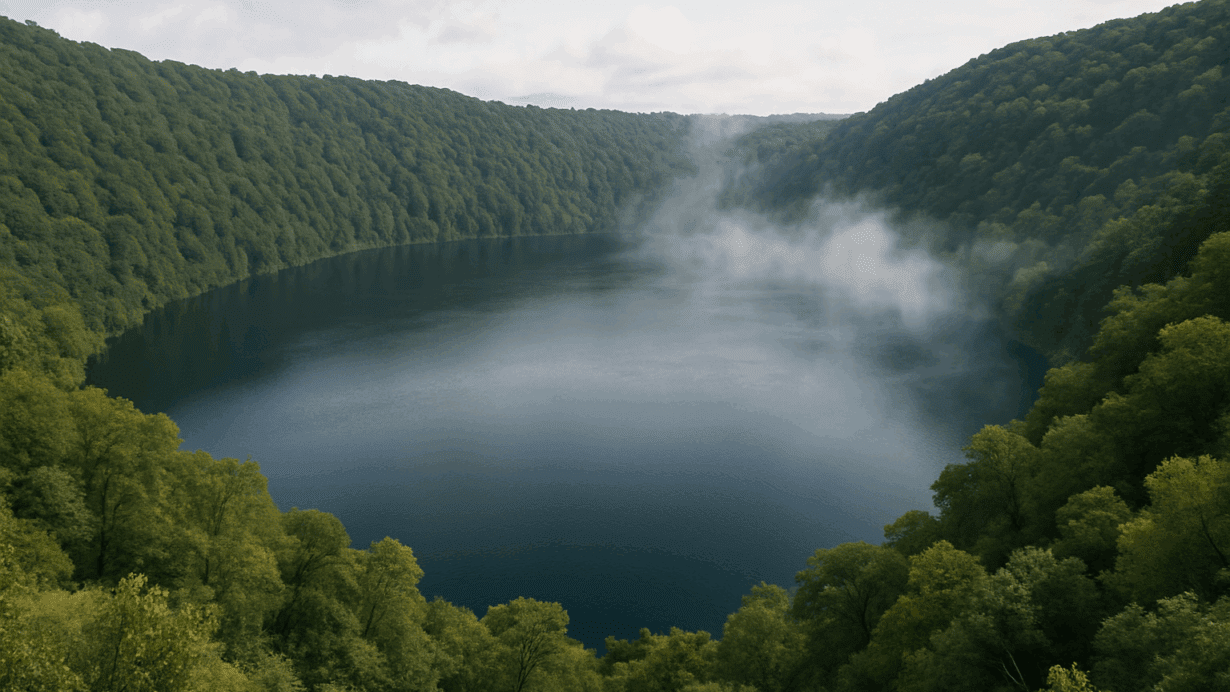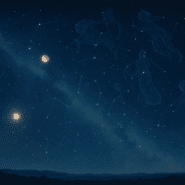QUICK SUMMARY
Avernus is a volcanic crater lake near Cumae that the Romans believed was a gateway to the Underworld. Its dark waters, sulfurous fumes, and eerie silence turned it into a powerful symbol of death, transition, and hidden knowledge. In myth and literature, it becomes the place where heroes like Aeneas descend to the realm of the dead and return transformed.
The Lake That Led to the Dead
Avernus is one of the most mysterious landscapes in Roman mythology: a volcanic crater lake near Cumae long believed to be an entrance to the Underworld. Its still, dark waters, its sulfurous fumes, and its eerie silence created the perfect setting for ancient fears and supernatural tales. Writers from Virgil to Pliny described Avernus as a threshold between worlds, a place where the boundary between life and death thinned and the living could cross through only with divine permission.
Avernus was never just a location. It embodied transition, danger, and revelation. Those who approached it did so with reverence, for this was thought to be the mouth of the realm below, guarded by ancient powers and steeped in mythic history.
A Landscape Shaped by Fire and Shadow
Avernus lies within a volcanic crater formed centuries before Roman settlement. Even in antiquity, the area fumed with volcanic gases, leaving a lingering smell of sulfur that contributed to its ominous reputation. Ancient observers noted that birds seemed to avoid flying above the lake. Whether due to toxic vapors or the unsettling silence of the place, this absence inspired the belief that Avernus meant “without birds.”
Surrounding forests once grew thick and dim. The canopy blocked the sun, creating an almost unnatural twilight. For Roman poets, this dreamlike atmosphere made Avernus a natural portal to the subterranean world where souls journeyed after death.
Avernus in Myth: Where Heroes Enter the Underworld
Avernus became legendary primarily through its role in epic literature. In Virgil’s Aeneid, it is here that the hero Aeneas seeks the guidance of the Sibyl of Cumae. With her help, he ventures through the world of the dead to meet his father Anchises. This journey, which shapes Aeneas’s destiny and Rome’s future, takes Avernus from a physical lake to a mythic gate of fate and divine will.
The Sibyl’s cave, long associated with prophetic visions, was believed to be located near the crater. Her presence connects Avernus not only to death but also to knowledge. Through her prophecies, the site becomes a place where truth emerges from darkness.
Rituals, Offerings, and Sacred Fear
Avernus inspired both dread and devotion. Romans associated it with chthonic deities who governed the hidden aspects of existence. Offerings to the dead, libations to spirits, and rites to appease underworld gods were often imagined taking place on its shores.
Because the lake symbolized passage between realms, travelers sometimes offered prayers for safe transition: crossing a threshold, beginning a voyage, or seeking insight into the future. The air itself felt like an omen, and standing at Avernus meant standing on the edge of something vast and unseen.
A Gateway with Strategic Importance
In later centuries, Avernus became part of the Roman naval base at Portus Julius under Agrippa. Its sheltered waters connected to a large network of channels, turning a mythic threshold into a military asset. Even then, its association with the Underworld persisted. Soldiers and sailors stationed there wrote of its unsettling calm and heavy atmosphere.
This blending of myth and practicality reflects Roman culture’s ability to weave sacred meaning into the physical world. Avernus remained both functional and supernatural, a place of ships and shadows.
Avernus in Roman Literature and Thought
Writers across generations returned to Avernus as a symbol of fear, mystery, and hidden knowledge. Cicero, Seneca, and Strabo all referenced its geologic and mythic qualities. To philosophers, Avernus embodied mortality’s inevitability. To poets, it represented the liminal spaces of the human spirit: grief, memory, and the search for meaning.
Over time, Avernus became a literary shorthand for the Underworld itself. A poet could evoke the entire realm of the dead by mentioning its surface, quiet as obsidian and just as deep.
A Place Between Worlds
For Romans, geography and mythology often merged. Mountains sheltered gods, rivers held stories, and certain lakes were believed to touch places where mortals rarely tread. Avernus stands as one of the clearest examples of this worldview. Its physical properties sparked imagination, while imagination, in turn, shaped cultural identity.
To speak of Avernus is to speak of crossing thresholds: from life to death, from ignorance to revelation, from fear to understanding. In its depths and shadows, Roman myth finds a perfect mirror for the mysteries that lie at the center of human experience.








